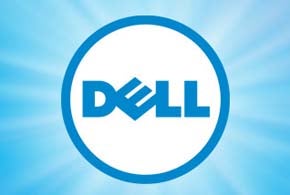Moving to create a business unit that focuses specifically on high-volume customer accounts, Dell announced the creation of a new line of business within the Dell Enterprise Solutions organization that focuses on the IT needs of Web-scale companies, telecommunications service providers, hosting companies, oil and gas firms, and research organizations.
What all these customers have in common is that they tend to have a lot of IT engineering capabilities of their own, which they often use to pursue a do-it-yourself (DIY) approach to building products and services, according to Jyeh Gan, director of product management and strategy for Dell Data Center Solutions. Rather than cede that business to distributors that focus specifically on those customers, Dell is making a concerted effort to show customers how the company’s manufacturing muscle and relationships with other vendors can be leveraged to reduce their costs, Gan explained.
“We think 25 percent of x86 server technologies are being consumed by these types of customers,” Gan said. “These customers require a much higher level of support because of the way they consume IT at scale.”
In many cases, DIY customers tend to rely on distributors, such as Supermicro, to acquire board-level components that they then use to create white-box servers, switches and other types of IT infrastructure. The challenge that vendors such as Dell now face is that an increasingly larger percentage of IT is being consumed via, for example, services provided by hosting and telecommunications providers.
In effect, Dell itself wants to leverage its volume in terms of manufacturing to become a source of IT components and services for DIY customers. In much the same way that Dell competes with Ingram Micro and Tech Data as a manufacturer that also distributes third-party IT products, Dell is essentially extending that model out to white-box technologies.
Prior to Dell’s going private, it would probably have been unlikely to see the company make this move, Gan said. But in the absence of quarterly profit and revenue scrutiny from Wall Street, it’s easier for Dell to adopt new business models that better reflect how IT products and technologies are being consumed at much higher rates of utilization by these customers than a traditional enterprise IT organization, he said.
The degree to which Dell can compete against well-entrenched distributors in this space naturally remains to be seen. But as the enterprise IT landscape continues to evolve in the age of the cloud, it’s clear that commercially branded IT infrastructure is now just one of many ways to bring IT products and services to market.
Michael Vizard has been covering IT issues in the enterprise for more than 25 years as an editor and columnist for publications such as InfoWorld, eWEEK, Baseline, CRN, ComputerWorld and Digital Review.

